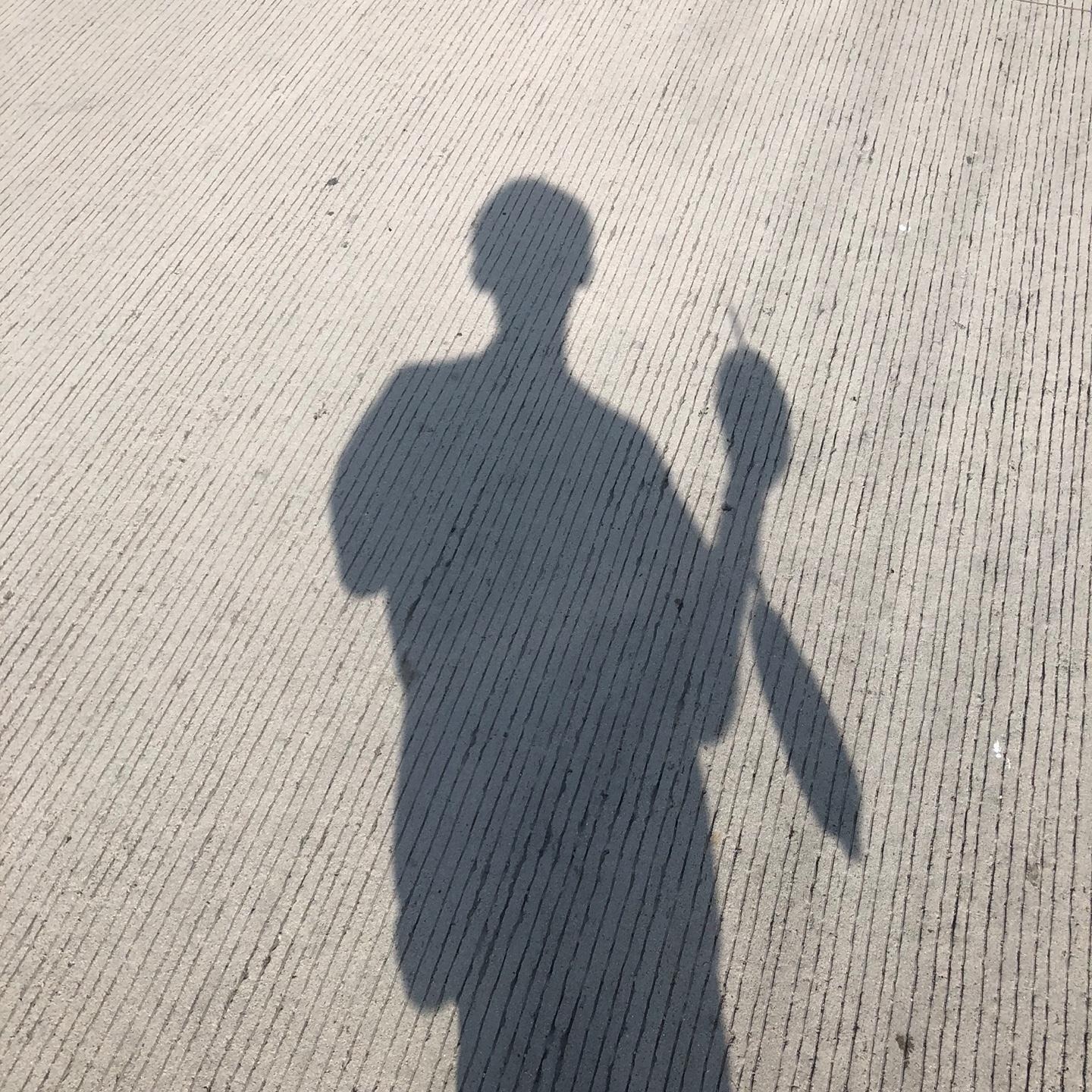250x250
Notice
Recent Posts
Recent Comments
Link
| 일 | 월 | 화 | 수 | 목 | 금 | 토 |
|---|---|---|---|---|---|---|
| 1 | 2 | 3 | 4 | |||
| 5 | 6 | 7 | 8 | 9 | 10 | 11 |
| 12 | 13 | 14 | 15 | 16 | 17 | 18 |
| 19 | 20 | 21 | 22 | 23 | 24 | 25 |
| 26 | 27 | 28 | 29 | 30 | 31 |
Tags
- 운영체제
- 영상처리
- 공부
- TensorFlow
- Windows10
- linux
- Computer Vision
- 쉘
- OpenCV
- C++
- CV
- shell
- 리눅스
- 딥러닝
- error
- 회귀
- 프로그래밍
- 프로세스
- Windows 10
- 시스템프로그래밍
- 학습
- C언어
- 알고리즘
- 텐서플로우
- 턱걸이
- 백준알고리즘
- python
- c
- 코딩
- 백준
Archives
- Today
- Total
줘이리의 인생적기
CV - opencv(Python) Geometric Transform(설명필요) 본문
728x90
Geometric Transform에 대해 알아보겠습니다.
Spatial Transform
-Scaling
-Rotation
-Translation
-Skew
Affine Transform
-Linear tranform
-이동, 회전, 스케일 및 이들의 조합에 의한 변환
(설명 필요)
Warping
-Nonlinear transform
(설명 필요)
1번 이미지 잘라서 붙여넣기

2번 이미지 이동

3번 이미지 회전, 확대, 축소
4번 Affine transform

코드 원형 설명
def imageResize(image, dsize=None, fx=0.0, fy=0.0, interpolation=cv2.INTER_LINEAR):
if dsize is None and fx == 0.0 and fy == 0.0:
fx = 1.0
fy = 1.0
return cv2.resize(image, dsize=dsize, fx=fx, fy=fy, interpolation=interpolation)
def imageTranslation(image, size=None, dx=0.0, dy=0.0, flags=cv2.INTER_LINEAR):
M = np.float32([[1, 0, dx], [0, 1, dy]])
if size is None:
rows, cols = image.shape[:2]
size = (cols, rows)
return cv2.warpAffine(image, M, size, flags=flags)
def imageRotation(image, center=None, angle=0.0, scale=1.0, size=None, flags=cv2.INTER_LINEAR):
if center is None:
rows, cols = image.shape[:2]
center = (cols/2, rows/2)
if size is None:
rows, cols = image.shape[:2]
size = (cols, rows)
M = cv2.getRotationMatrix2D(center, angle, scale)
return cv2.warpAffine(image, M, size, flags=flags)
def imageAffineTransformation(image, src_pts, dst_pts, size=None, flags=cv2.INTER_LINEAR):
if size is None:
rows, cols = image.shape[:2]
size = (cols, rows)
M = cv2.getAffineTransform(src_pts, dst_pts)
return cv2.warpAffine(image, M, dsize=size, flags=flags)
1번 코드 설명
더보기
from OpenCV_Functions import *
#이미지 설정
imagePath = "<이미지 경로>"
image = imageRead(imagePath)
imageShow("image", image)
#잘라내기
roi_x1 = 192
roi_y1 = 303
roi_x2 = 278
roi_y2 = 352
roi_rect = CutRectROI(image, roi_x1, roi_y1, roi_x2, roi_y2)
imageShow("cut_image", roi_rect)
height, width = roi_rect.shape[:2]
roi_resize_01 = imageResize(roi_rect, (int(width*1.5), int(height*1.5)))
roi_resize_02 = imageResize(roi_rect, fx = 1.5, fy = 1.5)
image2 = imageCopy(image)
#붙여넣기
roi_new_x1 = 16
roi_new_y1 = 330
image2 = PasteRectROI(roi_resize_01, roi_new_x1, roi_new_y1, image2)
imageShow("paste_image", image2)
roi_new_x1 = 219
roi_new_y1 = 338
image2 = PasteRectROI(roi_resize_02, roi_new_x1, roi_new_y1, image2)
imageShow("paste_image2", image2)
cv2.destroyAllWindows()2번 코드 설명
더보기
from OpenCV_Functions import *
#이미지 설정
imagePath = "<이미지 경로>"
image = imageRead(imagePath)
height, width = image.shape[:2]
print(height, width)
#이미지 이동
dx, dy = 100, 200
size = (width+dx, height+dy)
image_Translation_01 = imageTranslation(image, size=size, dx=dx, dy=dy)
imageShow("image", image)
imageShow("image_Translation", image_Translation_01)
cv2.destroyAllWindows()
3번 코드 설명
더보기
from OpenCV_Functions import *
def nothing(x):
pass
#이미지 설정
imagePath = "<이미지 경로>"
image = imageRead(imagePath)
backup = np.copy(image)
height, width = image.shape[:2]
center_x = int(width * 0.5)
center_y = int(height * 0.5)
cv2.namedWindow('imageRotation', cv2.WINDOW_GUI_EXPANDED)
#트랙바 설정
cv2.createTrackbar('Center_x', 'imageRotation', center_x, width, nothing)
cv2.createTrackbar('Center_y', 'imageRotation', center_y, height, nothing)
cv2.createTrackbar('angle: value-180', 'imageRotation', 180, 360, nothing)
cv2.createTrackbar('scale: value[\%]', 'imageRotation', 100, 200, nothing)
cv2.createTrackbar('size: value[\%]', 'imageRotation', 100, 200, nothing)
switch = '0:OFF\n1:On'
cv2.createTrackbar(switch, 'imageRotation', 1, 1, nothing)
while True:
cv2.imshow('imageRotation', image)
if cv2.waitKey(1) & 0xFF == 27:
break
x = cv2.getTrackbarPos('Center_x', 'imageRotation')
y = cv2.getTrackbarPos('Center_y', 'imageRotation')
angle = cv2.getTrackbarPos('angle: value-180', 'imageRotation')
scale = cv2.getTrackbarPos('scale: value[\%]', 'imageRotation')
size = cv2.getTrackbarPos('size: value[\%]', 'imageRotation')
sw = cv2.getTrackbarPos(switch, 'imageRotation')
modified_size = (int(width*size*0.01),int(height*size*0.01))
if sw == 0:
image = backup
else:
image = backup
image = imageRotation(image, (x, y), angle-180, scale*0.01, modified_size)
cv2.destroyAllWindows()
4번 코드 설명
더보기
from OpenCV_Functions import *
#이미지 설정
imagePath = "<이미지 경로>"
image = imageRead(imagePath)
#점 설정
src_pt1 = [195, 304]
src_pt2 = [273, 304]
src_pt3 = [280, 351]
dst_pt1 = [404, 194]
dst_pt2 = [698, 198]
dst_pt3 = [698, 386]
src_pts = np.float32([src_pt1, src_pt2, src_pt3])
dst_pts = np.float32([dst_pt1, dst_pt2, dst_pt3])
#원 그리기
image_point = drawCircle(image, tuple(src_pt1), 10, (255, 0, 0), -1)
image_point = drawCircle(image_point, tuple(src_pt2), 10, (0, 255, 0), -1)
image_point = drawCircle(image_point, tuple(src_pt3), 10, (0, 0, 255), -1)
#Affine 변환
roadAffine_01 = imageAffineTransformation(image_point, src_pts, dst_pts)
roadAffine_02 = imageAffineTransformation(roadAffine_01, src_pts, dst_pts, flags=cv2.WARP_INVERSE_MAP)
roadAffine_03 = imageAffineTransformation(roadAffine_01, dst_pts, src_pts)
#창 띄우기
imageShow("image_point", image_point)
imageShow("roadAffine_01", roadAffine_01)
imageShow("roadAffine_02", roadAffine_02)
imageShow("roadAffine_03", roadAffine_03)
cv2.destroyAllWindows()'공부 > Computer Vision(py)' 카테고리의 다른 글
| CV - opencv(python) imread, copy (0) | 2020.11.28 |
|---|---|
| CV - opencv(Python) Hough Transform(설명필요) (0) | 2020.07.24 |
| CV - opencv(Python) Morphology (0) | 2020.07.22 |
| CV - opencv(Python) Canny Edge (0) | 2020.07.21 |
| CV - opencv(Python) 경계선 검출(edge detection) (0) | 2020.07.20 |



